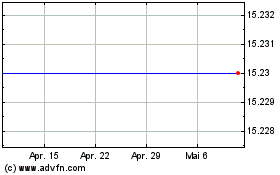By William Boston in Berlin and Eric Sylvers in Milan
This article is being republished as part of our daily
reproduction of WSJ.com articles that also appeared in the U.S.
print edition of The Wall Street Journal (June 1, 2019).
For Fiat Chrysler Automobiles NV and Renault SA, a possible
merger could help them solve one of their biggest problems: unused
plant capacity.
Fiat Chrysler and Renault had the worst-performing factories in
Europe last year, operating at 52% and 70% capacity, respectively,
according to LMC Automotive. The research firm predicts the rates
will fall further for both auto makers this year before ticking up
slightly in 2020.
On average, the main assembly plants of the European Union's
biggest auto producers operated at 73% capacity last year, just
below the profitability threshold. That compares with 81% in the
U.S. and 52% in China.
"If capacity usage falls below 75% it begins to be a problem,"
said Justin Cox, an analyst at LMC Automotive.
Volkswagen AG, with diverse brands including VW, Audi and
Porsche, operated at roughly 79% capacity, while BMW AG topped the
rankings at 90%. In general, though, European car makers have found
it hard to match factory capacity with the ups and downs of demand
that mark the industry.
A merger of Fiat Chrysler and Renault could give management more
tools to deal with the cyclical auto market and an opportunity for
cost savings, all leading to steadier sales and better factory
utilization.
The difficulty in getting capacity right stems in part from the
political and labor-related risks of closing factories. Strong
European trade unions can mobilize tens of thousands of workers to
protest job cuts and shutdowns intended to align production with
demand and shore up profits.
Capacity rates matter because maximizing output on a single
assembly line helps lower the overall cost of production, which in
turn boosts efficiency and profit margins. With demand for new
autos expected to soften after six years of robust expansion,
companies with the most overcapacity are the first to feel the
pain.
On Friday, a Renault spokeswoman said the company has called a
board meeting for Tuesday to discuss the merger proposal from Fiat
Chrysler announced earlier in the week.
Fiat Chrysler, even with the benefit of its higher-priced Jeep,
Ram and Dodge brands in the U.S., is the least profitable of
Europe's biggest auto makers, generating on average about EUR848
($944) in profit per vehicle last year, according to the CAR-Center
for Automotive Research at the University of Duisburg-Essen.
"Europe is an expensive appendage and China generates losses
with very few sales" for Fiat Chrysler, said Ferdinand Dudenhöffer,
the founding director of CAR.
Renault earned about EUR930 per vehicle, and Volkswagen
generated EUR1,277. Peugeot, which bought Opel and Vauxhall from
General Motors Co. in 2017, was the top earner among Europe's big
volume producers, according to CAR, earning EUR1,467 per vehicle.
Peugeot has been more deft than its peers at cutting staff and
capacity, working with French unions to avoid conflict.
Operating factories below capacity adds to hefty labor costs
reflecting in part high wages. European auto makers also face the
considerable expense of developing electric vehicles to reduce
average greenhouse-gas emissions to 95 grams per kilometer by 2021,
as mandated by European law.
In a meeting with analysts at Evercore ISI in March, BMW finance
chief Nicolas Peter said the luxury-car maker would have to boost
the share of electric vehicles in its fleet to as high as 15% from
about 6% now at a cost of as much as EUR7,000 per vehicle to meet
Europe's tough emissions targets.
At the same time, European auto sales are weakening and
production is falling, widening the gap between plant capacities
and output. New-car registrations in the EU, a proxy for new-car
sales, totaled 15.2 million vehicles last year, up 0.1%, according
to ACEA, the European Automobile Manufacturers' Association.
Passenger-car production fell 2.1% on the year to 16.1 million
vehicles.
Auto makers have bargained with trade unions to shrink their
payrolls in Europe by not replacing thousands of baby boomers now
reaching retirement age. In 2016, Volkswagen said it would cut
30,000 jobs at its core VW brand through attrition alone. Ford said
in March it would cut 5,000 jobs in Germany and close at least one
plant in Saarlouis, near the French border.
Renault and Fiat Chrysler executives didn't explicitly rule out
job cuts in their initial comments on a possible merger. On the day
Fiat Chrysler made its proposal to Renault, John Elkann, the scion
of the Agnelli family that controls the Italian-American company,
told a gathering in Milan: "There will be no negative impact and
there will be no factory closures."
Fiat Chrysler's plan targets roughly EUR5 billion, or $5.57
billion, in annual cost savings, mainly through sharing technology
and using the same components on various Fiat, Chrysler, Jeep and
Renault vehicles.
In most cases, plant closures are politically sensitive and
always a last resort, according to Ian Fletcher, an automotive
analyst with IHS Markit, a research group. "The situation at a
plant has to be really dire."
Write to William Boston at william.boston@wsj.com and Eric
Sylvers at eric.sylvers@wsj.com
(END) Dow Jones Newswires
June 01, 2019 02:47 ET (06:47 GMT)
Copyright (c) 2019 Dow Jones & Company, Inc.
Fiat Chrysler Automobile... (NYSE:FCAU)
Historical Stock Chart
Von Mär 2024 bis Apr 2024

Fiat Chrysler Automobile... (NYSE:FCAU)
Historical Stock Chart
Von Apr 2023 bis Apr 2024
